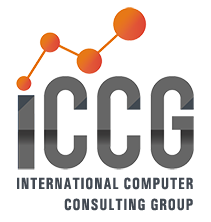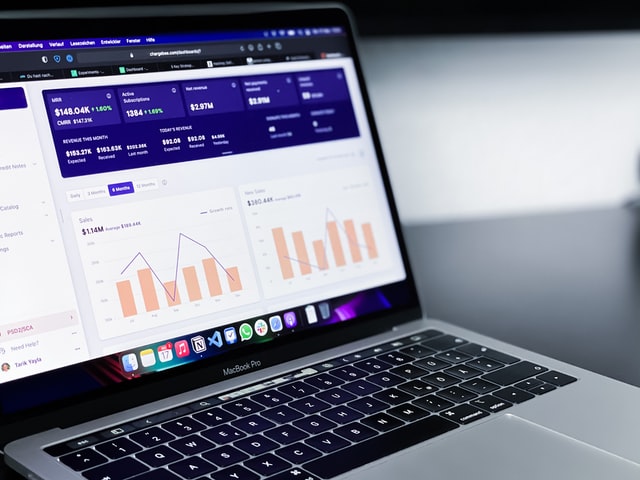Are you reducing idle cash while reducing risks?
Today, financial services organizations are more focused on what’s necessary to safeguard business continuity and solvency. Much of this begins with greater visibility and reliability of key data to help drive your critical business decisions, especially during critical market changes.
Our current blog series is reviewing cash and treasury best practices you can follow to prepare for instant payment changes and build true cash visibility. Last week we looked at understanding the impact of instant payments. In part two this week, we focus on generating cash positioning.
Consideration #2: Generate cash positioning
To satisfy both operational and regulatory requirements, financial services organizations need operating models for cash and liquidity management. To achieve and maintain this capability successfully, organizations need to focus on gaining greater visibility into their cash and liquidity.
Download the eBook
Cash and treasury: Prepare for instant payments and build true cash visibility
Read More
Topics: ERP, Distribution, Supply Chain, Enterprise Resource Planning, Cloudsuite Fashion & Apparel, Infor M3 ERP, Infor CloudSuite PLM for Fashion, Infor CloudSuite Fashion PLM, Enterprise Software, Infor CloudSuite Fashion, Supply Chain Management, Infor CloudSuite M3, Infor CloudSuite ERP
Today, financial services organizations are more focused on what’s necessary to safeguard business continuity and solvency. Much of this begins with greater visibility and reliability of key data to help drive your critical business decisions, especially during critical market changes.
Whether you call it faster payments, immediate payments, instant payments, or fast money, real-time payments technology has gained a solid foothold in the payment processing world.
Additionally, to satisfy both operational and regulatory requirements, you need operating models for cash and liquidity management. To successfully achieve and maintain this capability organizations need to focus on gaining greater visibility into their cash and liquidity.
Download the eBook
Cash and treasury: Prepare for instant payments and build true cash visibility
We have compiled a blog series that will focus on cash and treasury best practices you can follow to prepare for significant changes with instant payments and build true cash visibility. This week, we focus on the first consideration: understanding the impact of instant payments.
Read More
Topics: ERP, Distribution, Supply Chain, Enterprise Resource Planning, Cloudsuite Fashion & Apparel, Infor M3 ERP, Infor CloudSuite PLM for Fashion, Infor CloudSuite Fashion PLM, Enterprise Software, Infor CloudSuite Fashion, Supply Chain Management, Infor CloudSuite M3, Infor CloudSuite ERP
State governments want their software to be secure, compliant and designed for the 21st century. As such, many state governments are evaluating their current ERP platforms to determine how to modernize financials, procurement, human capital management, and payroll applications.
While some have pursued modernization by embarking on multi-tenant cloud journeys, most organizations are still in the planning phase.
They are moving in the right direction, though, as multi-tenant cloud SaaS software ensures applications are continually enhanced without the need for a multi-million-dollar, multi-year project. Multi-tenant cloud software also protects limited resources from overwhelming or menial tasks such as:
- Babysitting servers
- Applying and testing an endless number of patches
- Performing backups
- Managing disaster recovery
Read More
Topics: ERP, Distribution, Supply Chain, Enterprise Resource Planning, Cloudsuite Fashion & Apparel, Infor M3 ERP, Infor CloudSuite PLM for Fashion, Infor CloudSuite Fashion PLM, Enterprise Software, Infor CloudSuite Fashion, Supply Chain Management, Infor CloudSuite M3, Infor CloudSuite ERP
The evolution of supply chain business models has been accelerated by unprecedented disruptions. As a result, there has been a clear shift from analog supply chains models of the past into a trajectory towards a digitalized ecosystem. These new business models recognize and necessitate the move to a digital and integrated supply chain that provides visibility and ease of use for consumers.
This journey is about moving towards a world where all parties participating across your network are connected to a single version of the truth. Supply chain thinking is shifting from ‘linear supply chains’ to ‘supply chain eco-systems’ propelled and supported by digital technologies.
Gartner has established a five-stage model of the journey to supply chain maturity, ranging from manual, analog systems to a fully digitalized ecosystem. Key differentiators along this evolutionary chain include consideration of data and collaboration, with the ultimate goal of integrating data across multiple systems to achieve a fully connected ecosystem that provides transparency and visibility for your company both internally and externally.
Read More
Topics: ERP, Fashion & Retail, Distribution, Supply Chain, Fashion & Apparel, Supply Chain Visibility, Supply Chain Network, Cloudsuite Fashion & Apparel, Infor CloudSuite PLM for Fashion, Infor CloudSuite Fashion PLM, Enterprise Software, Infor CloudSuite Fashion, Supply Chain Operations, Supply Chain Management, Infor CloudSuite M3, Infor CloudSuite ERP
Are you able to monitor all intraday activity for true cash visibility?
Today, financial services organizations are more focused on what’s necessary to safeguard business continuity and solvency. Much of this begins with greater visibility and reliability of key data to help drive your critical business decisions, especially during critical market changes.
Our current blog series is reviewing cash and treasury best practices you can follow to prepare for instant payments and build true cash visibility. In the previous post, we reviewed best practices for enhancing cash and liquidity forecasting. This week, we focus on ways to establish intraday liquidity monitoring capabilities.
Consideration #4: Establish intraday liquidity monitoring capabilities
Banks and financial services organizations bound by intraday liquidity regulations have an opportunity to build a stronger competitive position.
According to consulting firm Oliver Wyman: “Analysis indicates that a 25–50% reduction in intraday liquidity costs is well within reach. Further, banks will also stand to benefit from optimal efficiency, improved risk management, and timely decision-making around this scarce resource.” There are numerous financial and non-financial benefits, as well as new technological tools that simplify these complex treasury functions.
Download the eBook
Cash and treasury: Prepare for instant payments and build true cash visibility
Read More
Topics: ERP, Distribution, Supply Chain, Enterprise Resource Planning, Cloudsuite Fashion & Apparel, Infor M3 ERP, Infor CloudSuite PLM for Fashion, Infor CloudSuite Fashion PLM, Enterprise Software, Infor CloudSuite Fashion, Supply Chain Management, Infor CloudSuite M3, Infor CloudSuite ERP
A critical lesson many organizations have learned when measuring the success of analytics initiatives is that speed of deployment and widespread user adoption are key factors to consider. These are key benefits of analytic applications delivered with or embedded in ERP systems or business applications.
Analytic applications provide pre-built business intelligence (BI) and analytical capabilities that promise to democratize analytics because most of the hard work in transforming data to insights has already been done. However, the historical challenge these applications faced was that they weren’t built with agile cloud technology or modern data architectures that could keep up with the growing complexity, scale, and changing requirements of the line of business (LOB)-driven analytic requirements.
Read More
Topics: ERP, Fashion & Retail, Distribution, Supply Chain, Fashion & Apparel, Supply Chain Visibility, Supply Chain Network, Cloudsuite Fashion & Apparel, Infor CloudSuite PLM for Fashion, Infor CloudSuite Fashion PLM, Enterprise Software, Retail Supply Chain, Infor CloudSuite Fashion, Supply Chain Operations, Supply Chain Management, Infor CloudSuite M3, Infor CloudSuite ERP
The ability to execute, seamlessly and in real-time, is critical as your company works to develop a continuous supply chain. Being uniquely capable of connecting multiple facets of this execution -- not just to an order management system but also to TMS for transportation management and WMS for warehouse management will be key components to implementing continuous supply chain execution.
Integrated multi-party source-to-settle process
Sourcing execution or the ability to establish real-time connectivity to suppliers is key. What we are really speaking to here is the need to orchestrate end-to-end physical and financial operations between order management, global trade management, transportation, warehouse, product traceability, and even payables management.
Streamlined manufacturing
Manufacturing execution is focused on streamlining processes, driving better decision making and gaining productivity. Supply chains must optimize and automate the manufacturing process from raw materials and components to finished goods. Having the ability to anticipate and optimize lead times is crucial for downstream improvement.
Read More
Topics: ERP, Fashion & Retail, Distribution, Supply Chain, Fashion & Apparel, Supply Chain Visibility, Supply Chain Network, Cloudsuite Fashion & Apparel, Infor CloudSuite PLM for Fashion, Infor CloudSuite Fashion PLM, Enterprise Software, Retail Supply Chain, Infor CloudSuite Fashion, Supply Chain Operations, Supply Chain Management, Infor CloudSuite M3, Infor CloudSuite ERP
Asset Investment Planning enables your asset-intensive organization to determine which asset investments will enable you to best meet your service level objectives with the right level of expenditure while minimizing the risk of asset failure. An API can also help you determine the best time to invest in order to smooth your capital expenditures over time.
Modern AIP solutions simplify the process of developing asset investment plans by allowing you to leverage the data that is already in your asset registry in your enterprise asset management (EAM) to tell you what assets your organization has, your work management system that manages maintenance operations, and your asset performance management (APM) system that monitors asset condition reliability.
You use that data to quantify four key inputs: Asset condition, asset criticality, business risk, and level of service. Asset condition allows you to visualize deterioration over the asset’s lifetime and establish where intervention is necessary. Asset criticality determines the impact the failure of an individual asset will have on your organization’s ability to realize your business objectives. Business risk determines the consequences of asset failure. Level of service required enables your organization to operationalize your organization’s policies, strategies and objectives, tie those to KPIs and then link that to level of service requirements.
Read More
Topics: ERP, Distribution, Supply Chain, Supply Chain Visibility, Supply Chain Network, Enterprise Asset Management, Enterprise Software, Retail Supply Chain, Infor CloudSuite Fashion, Supply Chain Operations, Supply Chain Management, Infor CloudSuite M3, Infor CloudSuite ERP
The future of planning is connected, intelligent, and continuous. Yet many companies remain so far away from this vision, it often seems unachievable. With many planning processes being so siloed and disconnected from execution, they can feel ineffective.
Fortunately, evaluations of the planning landscape reveal many organizations are adopting technologies that move towards a de-siloed, network-based approach to planning. For these companies, the primary goal centers around connecting planning capabilities to “a single version of the truth.” To optimize planning capabilities, it crucial to achieve this connection at the enterprise level as well as into the broader supply network.
But to do this involves using integrated business planning (IBP) or sales and operations planning (S&OP) to collaborate and analyze, perform demand planning to improve forecasting, optimize supply planning, and facilitate synchronization. Each of these areas are critical to a successful planning process and are more powerful when integrated and connected across a network.
Read More
Topics: ERP, Fashion & Retail, Distribution, Supply Chain, Fashion & Apparel, Supply Chain Visibility, Supply Chain Network, Cloudsuite Fashion & Apparel, Infor CloudSuite PLM for Fashion, Infor CloudSuite Fashion PLM, Enterprise Software, Retail Supply Chain, Infor CloudSuite Fashion, Supply Chain Operations, Supply Chain Management, Infor CloudSuite M3, Infor CloudSuite ERP
An estimated $350 billion of invoices are typically involved in supply chain finance programs. Known as "reverse factoring," this process assists suppliers in obtaining the capital needed to keep supply chains humming, as described by Aite Group. Opposed to traditional receivables financing or factoring, reverse factoring is driven by the buyer and its relationship to a bank or finance provider, with capital being made available to suppliers based on the relationship parameters.
Banks are happy to step in, within specific jurisdictions and credit profiles. Research firm Coalition reports that banks logged approximately $12.7 billion in revenue in the first half of 2020 via total supply chain finance volumes. However, limitations are significant, and often times, the suppliers that need financing the most are excluded from such programs.
Read More
Topics: ERP, Fashion & Retail, Distribution, Supply Chain, Fashion & Apparel, Supply Chain Visibility, Supply Chain Network, Cloudsuite Fashion & Apparel, Infor CloudSuite PLM for Fashion, Infor CloudSuite Fashion PLM, Enterprise Software, Retail Supply Chain, Infor CloudSuite Fashion, Supply Chain Operations, Supply Chain Management, Infor CloudSuite M3, Infor CloudSuite ERP





.jpg)





